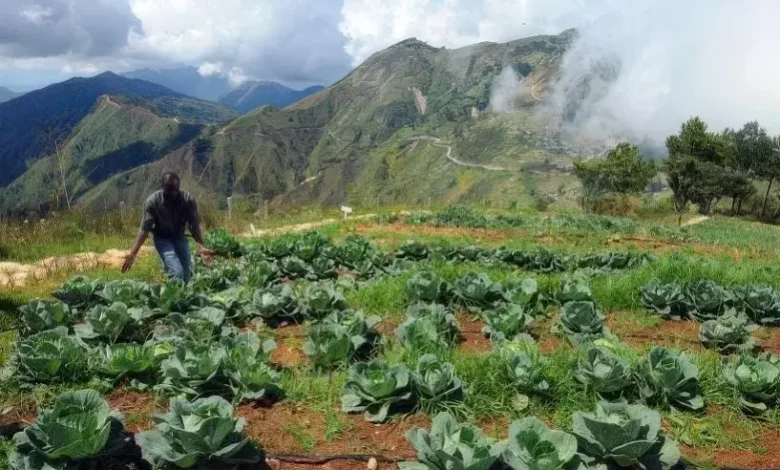Dominica’s Tropical Climate

Dominica’s tropical climate is a defining feature of the island, shaping its lush natural landscapes, rich biodiversity, and vibrant culture. Located in the Eastern Caribbean, Dominica enjoys a warm, humid climate influenced by its mountainous rainforest, trade winds, and proximity to the Atlantic Ocean and Caribbean Sea. This dynamic climate supports the island’s rainforests, rivers, and agricultural activities, making it a haven for eco-tourism and sustainable living.
Key Characteristics of Dominica’s Climate
Dominica’s climate is classified as tropical rainforest (Af) under the Köppen-Geiger climate classification, characterized by high temperatures, abundant rainfall, and relatively consistent weather patterns throughout the year.
- Temperature: The average annual temperature ranges between 26°C and 28°C (79°F to 82°F), with minimal seasonal variation. Coastal areas tend to be warmer, while higher elevations, such as Morne Diablotin and Morne Trois Pitons, experience cooler temperatures.
- Humidity: Relative humidity is generally high, often exceeding 80%, especially in rainforest regions.
- Rainfall: Dominica is one of the wettest islands in the Caribbean, receiving an average of 1,900 to 5,000 mm (75 to 197 inches) of rainfall annually, depending on the region.
Wet and Dry Seasons
Dominica experiences two primary seasons:
- Wet Season (June to November): Marked by heavy rainfall, thunderstorms, and the potential for tropical storms and hurricanes. This period coincides with the Atlantic hurricane season.
- Dry Season (December to May): Characterized by lower rainfall and slightly cooler temperatures, offering ideal conditions for tourism and outdoor activities.
Despite these seasonal patterns, rain showers can occur at any time due to the island’s mountainous topography and trade winds.
Microclimates Across the Island
Dominica’s terrain creates diverse microclimates, where weather conditions can vary significantly over short distances:
- Coastal Areas: Warm and breezy with moderate rainfall.
- Rainforests: High humidity and frequent rainfall, supporting dense vegetation.
- Mountain Peaks: Cooler temperatures and misty conditions, especially in the highlands of Morne Trois Pitons National Park.
- Leeward vs. Windward Sides: The leeward (western) side is generally drier, while the windward (eastern) side, facing the Atlantic, receives more rainfall.
Impact of Climate on Biodiversity
Dominica’s tropical climate is a key factor in supporting its rich biodiversity. The island is home to lush rainforests, rivers, waterfalls, and endemic species such as the Imperial Amazon (Sisserou Parrot). The combination of warm temperatures and abundant rainfall creates ideal conditions for diverse ecosystems, from coastal mangroves to montane forests.
Agriculture and Climate
Agriculture is a vital part of Dominica’s economy, heavily influenced by the tropical climate. Crops like bananas, citrus fruits, cocoa, coffee, and root vegetables thrive in the island’s fertile soils and warm conditions. However, farmers must also contend with climate-related challenges, such as:
- Hurricanes and Tropical Storms: Causing crop damage and soil erosion.
- Droughts: Affecting water availability during prolonged dry periods.
- Pests and Diseases: More prevalent in warm, humid conditions.
To adapt, many farmers practice sustainable agriculture, using techniques like crop rotation, agroforestry, and organic farming.
Climate Change and Its Effects
Like many small island nations, Dominica is vulnerable to the impacts of climate change, which include:
- Increased Storm Intensity: Stronger hurricanes with more destructive winds and rainfall.
- Sea-Level Rise: Threatening coastal communities and ecosystems.
- Changing Rainfall Patterns: Leading to more frequent droughts and floods.
- Biodiversity Loss: Stress on sensitive ecosystems and species.
Dominica’s government is actively addressing these challenges through resilience-building initiatives, such as the Climate Resilience and Recovery Plan launched after Hurricane Maria in 2017. The plan focuses on sustainable development, disaster preparedness, and environmental conservation.
Tourism and Weather Considerations
Dominica’s tropical climate makes it an attractive destination year-round. The dry season is particularly popular with tourists seeking outdoor adventures like hiking the Waitukubuli National Trail, diving in marine reserves, and exploring waterfalls such as Trafalgar Falls.
However, the wet season also offers unique experiences, with lush green landscapes, vibrant rivers, and fewer crowds. Eco-tourism activities are designed to be adaptable, ensuring that visitors can enjoy Dominica’s natural beauty regardless of the weather.
The Path Forward: Embracing Sustainability
Dominica’s tropical climate is both a blessing and a challenge. As the island continues to adapt to climate change, sustainability remains at the forefront of national policies and community initiatives. Efforts to promote renewable energy, protect natural resources, and build climate-resilient infrastructure are crucial for ensuring that Dominica’s environment and way of life endure for future generations.
By embracing its natural climate while preparing for future environmental shifts, Dominica serves as a model of resilience and sustainable development in the Caribbean.




